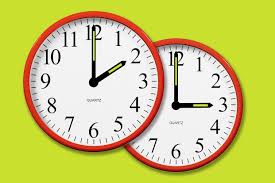 Daylight saving time (DST) and standard time represent two different approaches to organizing our clocks throughout the year.
Daylight saving time (DST) and standard time represent two different approaches to organizing our clocks throughout the year.
Most of the United States currently follows a system where clocks “spring forward” one hour in March and “fall back” in November.
Daylight Saving Time-Clocks are set one hour ahead of standard time, providing more daylight in the evening hours during warmer months.
Standard Time-The natural time based on the sun’s position, used during winter months in most places
Standard time advocates argue it’s more aligned with our natural circadian rhythms and that the twice-yearly clock changes disrupt sleep patterns, productivity, and even increase accident rates.
Daylight saving time supporters prefer the extra evening daylight for recreational activities and argue it can benefit retail businesses and energy consumption patterns.
The health and economic impacts of both the time changes themselves and the choice between permanent DST versus standard time continue to be studied and debated.
Some recommend abolishment of DST because discrepancies between the circadian biological clock and environmental light-dark cycle lead to significant sleep disruption.
The one hour shift in the spring causes individuals to awaken an hour earlier and can lead to acute sleep loss and sleep debt.
Sudden circadian rhythm, misalignment leads to poor sleep, and can produce inflammatory markers, changes in metabolism, and altered myocyte gene expression among other pathologic cellular processes.
It is suspected these disturbances may have implications in various body systems.
Seven studies indicated there is a significantly higher risk for acute myocardial infarction observed in two weeks following the spring time shift.
One study found that women had an increased risk of atrial fibrillation after DST spring transition.
A Finish study showed an increased risk of ischemic stroke hospitalizations within two days after spring DST transition.
A large study analyzing fatal motor vehicle crashes concluded that the spring DST transition increased fatal crash risk by 6% and removing DST could prevent approximately 28 fatal car crashes per year (1996-2017 study).
Some studies have found a connection between DST transition and depression or suicide incidence.
Many studies show acute worsening of health with the spring transition, but not the fall transition, suggesting health issues are due to acute changes in clock time, but also to the discrepancy between clock time and circadian rhythm.
The discrepancy between personal schedule and innate circadian rhythm is called social Jetlag, and in its chronic mismanage misalignment it is associated with obesity, metabolic syndrome, heart disease, and depression.
Standard time aligns better with circadian rhythm.
